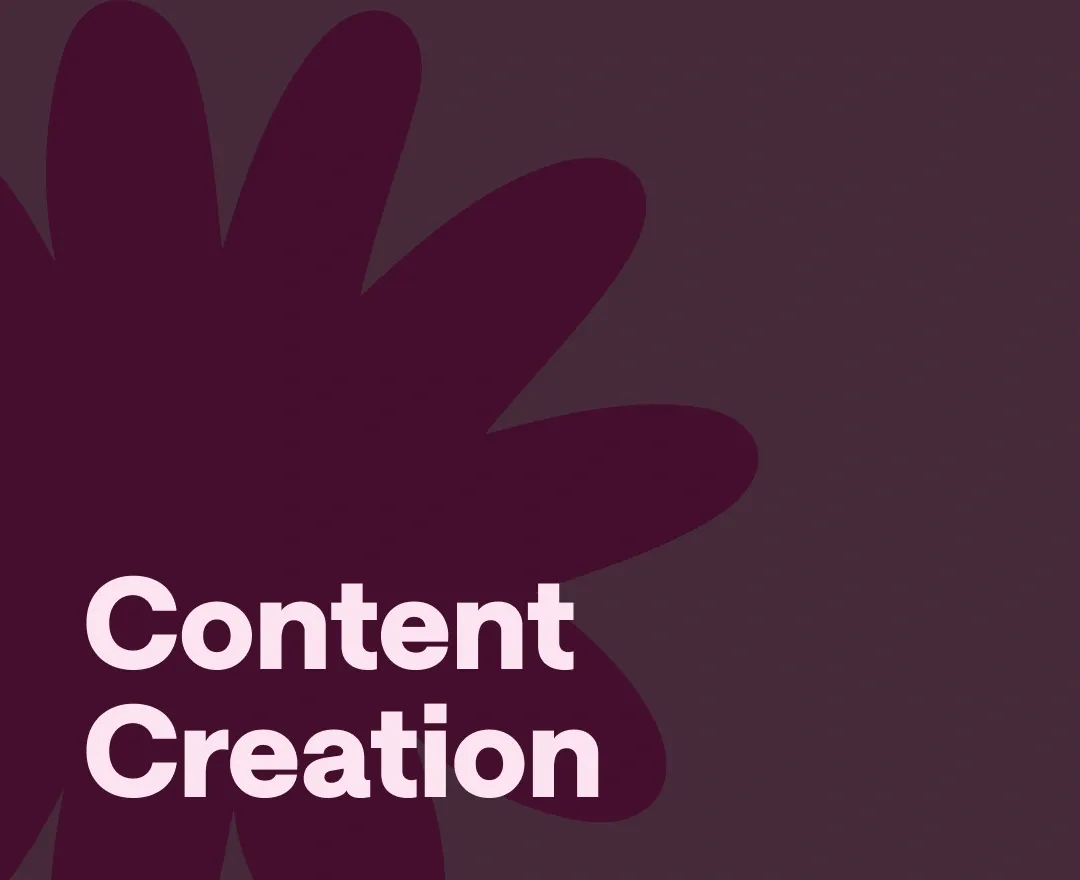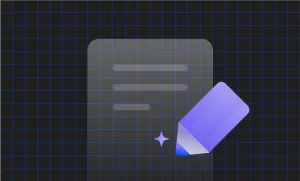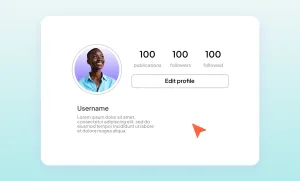Content creation is everywhere nowadays, and becoming a content creator can be an exciting, rewarding journey, whether you're hoping to start a hobby or make a full-time career out of it. And with so many platforms and types of content, the opportunities are practically endless.
But how do you actually get started?
In this guide, we’ll break down exactly how to become a content creator—from defining the role to practical tips on building your audience, making money, and avoiding common pitfalls.
Table of Contents
– What is Content Creation?
– Types of Content Creators
– Popular Platforms for Content Creation
– Essential Content Creator Skills You Need
– How to Become a Content Creator (Step-by-Step)
– Content Creation Tips (Mistakes to Avoid)
– Real Examples of Content Creator Pitfalls
What is content creation?
At its core, content creation is about producing material that informs, entertains, or educates an audience. This content can take various forms—blog posts, videos, podcasts, images, social media posts, you name it. Today’s digital creators can reach large audiences through platforms like YouTube, Instagram, TikTok, and more.
With that said, being a content creator isn’t just about sharing random ideas online. You've got to make sure you're creating valuable, engaging content that resonates with a specific group of people. Whether you want to be a blogger, vlogger, podcaster, or social media influencer, each path has its own set of opportunities.
Types of content creators
Not all content creators are the same, and different creators cater to different audiences with varying types of content. Here are some common types of content creators:
- Blogger: Someone who writes blog posts and articles, typically on a specific topic.
- Vlogger: A video blogger usually shares personal experiences, reviews, or tutorials.
- Podcaster: Someone who creates and hosts audio content on topics such as interviews, storytelling, or discussions.
- Social media influencer: A person who builds a large following on social media platforms and promotes brands or causes. The types of social media content you can create include short videos (reels, TikToks,) stories, posts, and more.
These creators often overlap across platforms, and one person can wear multiple hats, being a blogger, vlogger, and social media influencer all at once.
Popular platforms for content creation
The platform you choose will largely depend on the type of content you want to create and where your audience spends their time. Here are some of the most popular platforms for today’s digital creators:
- YouTube: Perfect for long-form videos, vlogs, tutorials, and more.
- Instagram: Ideal for visual content such as photos, stories, and short videos.
- TikTok: A fast-growing platform that’s all about short, snappy video content.
- Blogging platforms: WordPress, Medium, and others are great for long-form written content.
- Podcasting platforms: Spotify, Apple Podcasts, and Google Podcasts are popular for distributing audio content.
Choosing the right platform is essential because it will shape your content strategy. But once you kick things off on one social media channel, the ideal scenario is to repurpose that content across as many other social media channels as possible for maximum visibility and reach.
Essential Content Creator Skills You Need
Becoming a successful digital creator isn’t just about having a good camera or writing skills. You’ll need to develop a range of skills to create engaging, high-quality content.
Here are some important ones:
1) Video editing
If you plan on vlogging, creating tutorials, or anything video-related, video editing is important. You don’t need fancy software—programs like Podcastle, iMovie, Adobe Premiere Pro, and even mobile apps can help you get started. And now, AI video tools such as HeyGen’s AI video generator make it even simpler by automating parts of the process, letting creators produce polished videos without deep technical skills.
2) Photography
Great visuals are crucial, especially on platforms like Instagram or Pinterest. Learning the basics of lighting, composition, and editing photos can make a huge difference in your content’s quality.
3) Writing
If you’re going into blogging or writing social media captions, strong writing skills are a must. Practice writing clearly and concisely, making sure your content is easy to read and engaging.
4) SEO and analytics
Understanding search engine optimization (SEO) is vital if you want your content to reach more people. You’ll also need to track your performance using analytics tools (like Google Analytics or social media insights) to understand what’s working and what’s not.
How to become a content creator (step-by-step)
Now that we’ve covered the basics, let’s dive into how you can start your journey of becoming a content creator. This step-by-step guide is meant to give you a clear roadmap to follow.
1. Find your niche
Before anything else, you need to figure out what kind of content you want to create. Your niche is the specific topic or field you’ll focus on. To find your niche:
- Think about your passions or interests. What do you enjoy doing or talking about?
- Consider your skills or expertise. Is there something you’re particularly knowledgeable about?
- Look for market gaps. Are there underserved areas where your content could stand out?
We know what a content genre is: fitness, beauty, technology, gaming, travel, and food to name a few. But to truly niche down, think about the kind of content within that genre. If you're a gamer, would you play platformers, puzzle games, or first-person shooters? If you're a beauty vlogger, would you cover luxury or toxic-free products? Picking the right niche is critical to how to become a content creator, as it helps you attract the right audience from the beginning.
2. Develop a personal brand
Your personal brand is how your audience will see you—it’s your identity as a content creator. To develop your brand:
- Choose a name or handle that reflects your content.
- Create a consistent visual style using specific fonts, colors, and design elements across all your platforms.
- Determine your tone of voice. Do you want to be serious, funny, educational, or inspirational? Consistency is key here.
Your personal brand should be authentic and something you can stick with in the long term.
3. Create your first pieces of content
Once your niche and brand are in place, it’s time to start creating! Here are some tips:
- Start small: Don’t worry about being perfect. Just focus on getting your first few pieces of content out there. Whether it’s writing your first blog post, recording a podcast episode, or filming your first YouTube video, you’ll learn and improve over time.
- Quality over quantity: While it’s tempting to churn out a lot of content quickly, focus on making each piece of content valuable. This will help you stand out more effectively.
When you’re just getting started and figuring out how to become a content creator with no experience, experimenting with different content types can help you find what works best for you and your audience.
4. Building an audience
Creating content is one thing, but attracting an audience is another challenge altogether. Here are some tips for content creators that we’ve collected that can help you build a loyal audience:
- Be consistent: Consistency is key when it comes to building a following. Whether you post once a week or daily, sticking to a regular schedule will help keep your audience engaged.
- Engage with your followers: Being active in the comments, replying to messages, and showing appreciation for your followers can create a strong sense of community around your content.
- Leverage social media: Sharing your content across multiple social media platforms helps you reach new audiences. Tailor your content for each platform and engage with users through relevant hashtags and social media trends.
- Collaborate with others: Working with other creators is a great way to expand your reach. Look for opportunities to guest post, collaborate on videos, or even appear on someone else’s podcast.
5. Monetization strategies for content creators
Let’s be honest: this is what you’re really after. And even if you’re not, it wouldn’t hurt to make money out of what you love the most. So here are some common ways you can make money as a content creator these days:
Partner with brands for sponsored content
One of the most popular ways content creators make money is through sponsored content. This involves partnering with brands that align with your niche and creating posts, videos, or stories featuring their products. It's a win-win: brands get exposure, and you get paid.
But here's the key—authenticity is everything. Your audience can spot a forced partnership from a mile away. So, when working with brands, make sure they genuinely resonate with your content. Not only does this keep your audience engaged, but it also makes brands more likely to want to work with you long-term.
Tap into affiliate marketing
Affiliate marketing is a low-effort, high-reward way to monetize your content. Basically, you promote products or services, and when your audience makes a purchase through your unique link, you earn a commission. It’s like getting paid for recommending things you already love.
The beauty of affiliate marketing is that you don’t need a huge following to start earning. Many affiliate programs are happy to work with creators of all sizes, as long as your audience is engaged. Whether you’re a beauty influencer linking makeup products or a tech guru sharing gadget deals, there’s an affiliate program for almost every niche out there.
Sell digital products or courses
Got some insider knowledge or skills you want to share? Selling digital products or online courses can be a lucrative income stream. Whether it's an eBook, a guide, or a full-blown video course, digital products can bring in revenue while you sleep.
This strategy works best if you're established as an authority in your space. For instance, if you’re a fitness influencer, you could sell personalized workout plans. Or, if you’re a pro at photography, why not offer a course on photo editing? The best part is, once the product is created, you can sell it over and over without needing to restock anything.
Offer exclusive content through subscriptions
If your audience is craving more from you, offering exclusive content through platforms like Patreon, Ko-fi, or even YouTube memberships can be a great way to monetize. Fans pay a monthly fee for perks like behind-the-scenes footage, early access to content, or even personalized shoutouts.
This model not only provides steady income but also strengthens your connection with your most loyal followers. The key is to offer real value with your exclusive content—something that feels special and worth paying for. It could be a private podcast, live Q&A sessions, or custom merchandise.
Create and sell your own merchandise
Merch is more than just t-shirts with your logo on them. It’s a way for your audience to feel more connected to you and your brand. Whether it’s branded hoodies, mugs, or custom designs, selling merch can turn your followers into walking advertisements.
This monetization strategy is especially effective for creators with a strong brand or catchphrase. If you've got a unique vibe that your followers love, putting that personality into wearable or usable items can boost both your income and your brand presence. Plus, thanks to print-on-demand services, you don’t even need to worry about upfront costs or managing inventory.
Content creation tips (avoid these mistakes!)
While becoming a successful content creator is exciting, there are some common mistakes to avoid along the way:
1. Focusing too much on numbers over quality
It’s easy to get obsessed with follower counts, views, and likes, but focusing too much on numbers can hurt your growth in the long run. While analytics are important, they don’t tell the full story of your content's value. If you’re constantly chasing metrics, your content may lose the authentic touch that drew your audience in the first place.
Instead of trying to game the algorithm or get that next viral post, focus on creating content that you genuinely enjoy and believe in. Quality content always stands the test of time, and when your audience feels your passion, they’ll keep coming back, regardless of how fast your follower count grows.
2. Overcommitting to brand deals
Saying yes to every brand deal that comes your way can be tempting, especially when you're eager to monetize your platform. However, overcommitting can lead to burnout and harm your credibility. When your audience sees you promoting too many products, it starts to feel inauthentic, and they may begin to question whether you're genuinely recommending something or just doing it for the paycheck.
Be selective with the brands you work with, ensuring they align with your values and your audience's interests. Not only does this help maintain your authenticity, but it also keeps your content from feeling like a constant sales pitch.
3. Ignoring your audience’s feedback
Your audience is your greatest asset as a content creator, so it's crucial to listen to their feedback. Whether it's through comments, messages, or direct feedback, your followers are telling you what they like, what they don't, and what they want to see more of.
Ignoring this feedback can lead to a disconnect between you and your community. While it’s impossible to please everyone, taking constructive criticism on board and making small adjustments to your content can go a long way in keeping your audience engaged and invested in what you create.
4. Failing to diversify income streams
Relying on just one source of income—like brand deals or YouTube ad revenue—can be risky. Algorithms change, sponsorships dry up, and if you're not diversifying your income streams, you could find yourself in a tough spot financially. Successful content creators often have multiple revenue streams, whether it’s affiliate marketing, merchandise, or digital products.
By diversifying your income, you not only protect yourself from changes in the platform but also increase your overall earning potential. Start exploring different ways to monetize your brand early on, so you don’t put all your eggs in one basket.
5. Neglecting self-care and mental health
Burnout is real in the world of content creation. With the constant pressure to create, post, and engage, many creators push themselves too hard and neglect their mental health. The reality is, content creation can be exhausting, especially when you're wearing multiple hats—creator, editor, marketer, and more.
It’s important to set boundaries, take breaks, and practice self-care to avoid burnout. Your audience will understand if you need to step back every now and then, and in the long run, taking care of your mental health will help you produce better content.
Real-Life examples of content creator pitfalls
Let’s take a look at three real-life examples of content creators who learned from their mistakes:
1. Matt D'Avella – YouTuber & filmmaker
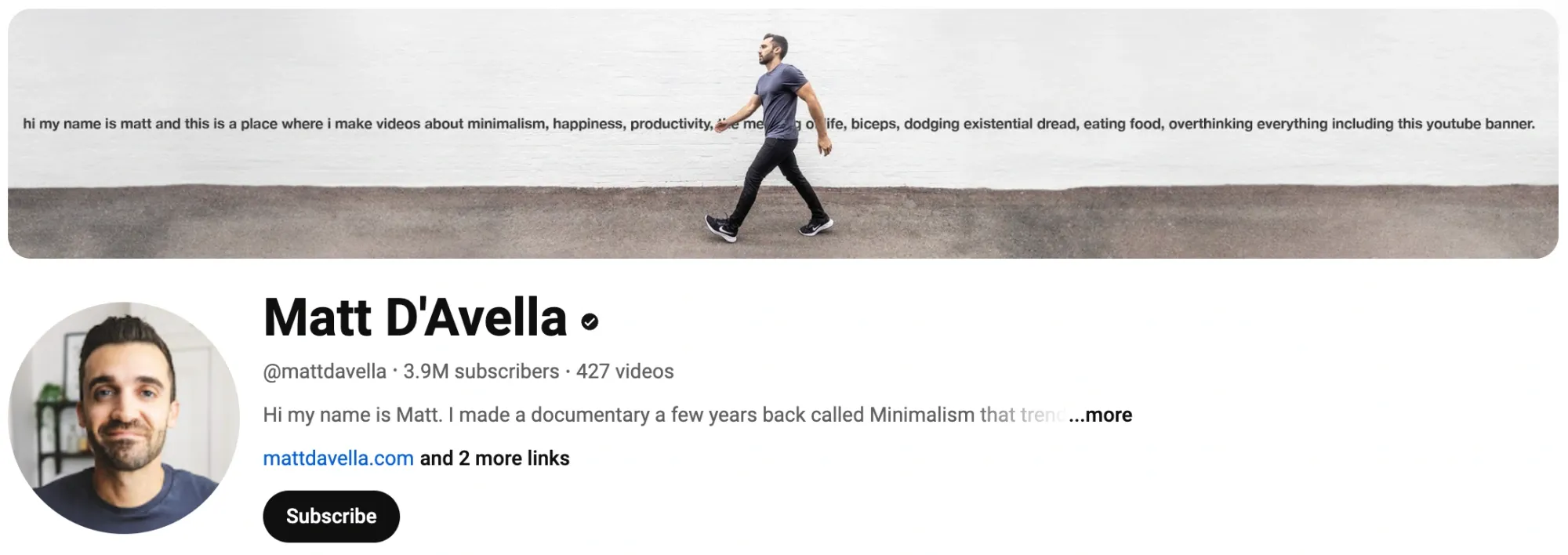
Matt, known for his documentaries and minimalist lifestyle videos, experienced burnout after pushing himself too hard with frequent uploads and high-quality video production. The pressure to continuously churn out content led him to feel creatively drained. To recover, Matt adopted a more sustainable approach by reducing his video output, focusing on quality over quantity, and setting boundaries to avoid overwork. This shift helped him regain his passion for content creation and maintain his audience engagement.
2. Jenna Marbles – YouTuber
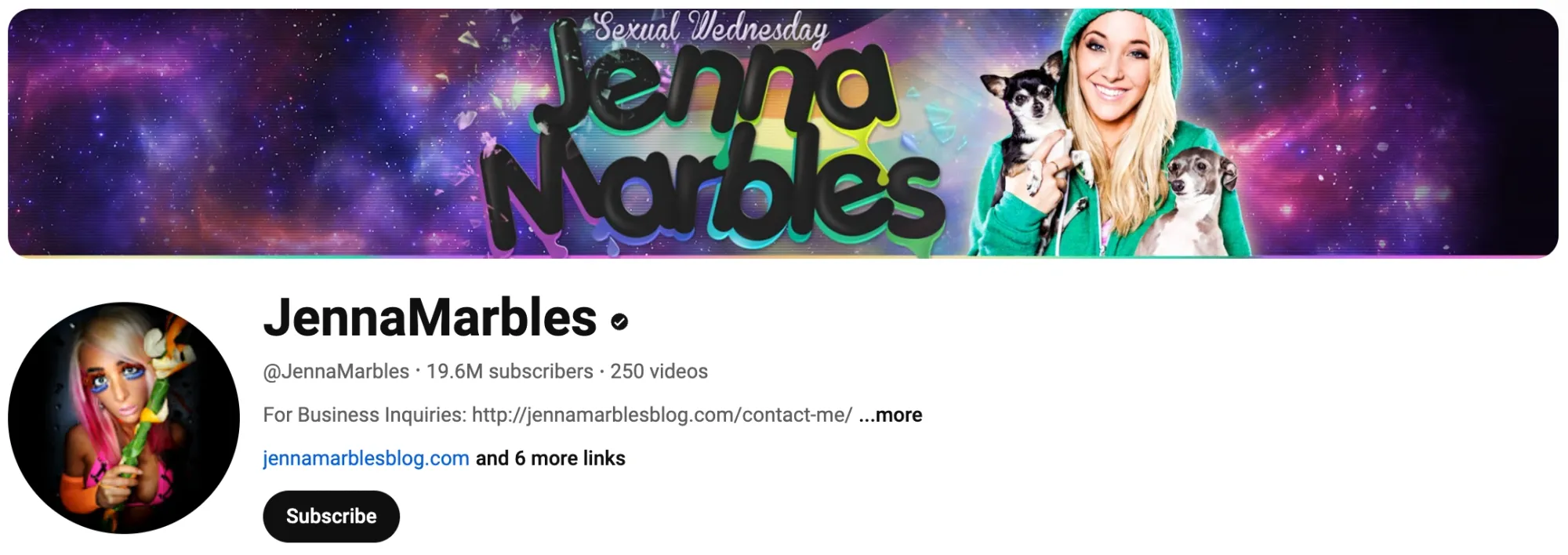
Jenna Marbles, once one of YouTube’s top creators, faced backlash after old, insensitive content resurfaced. In 2020, Jenna took accountability for her past mistakes, apologizing publicly and stepping away from YouTube indefinitely to reflect. Her situation highlights the importance of responsibility and self-awareness in content creation. Her example serves as a reminder to carefully curate content, understanding that old posts can resurface and impact a creator’s reputation.
3. Jacksepticeye – YouTuber & gamer
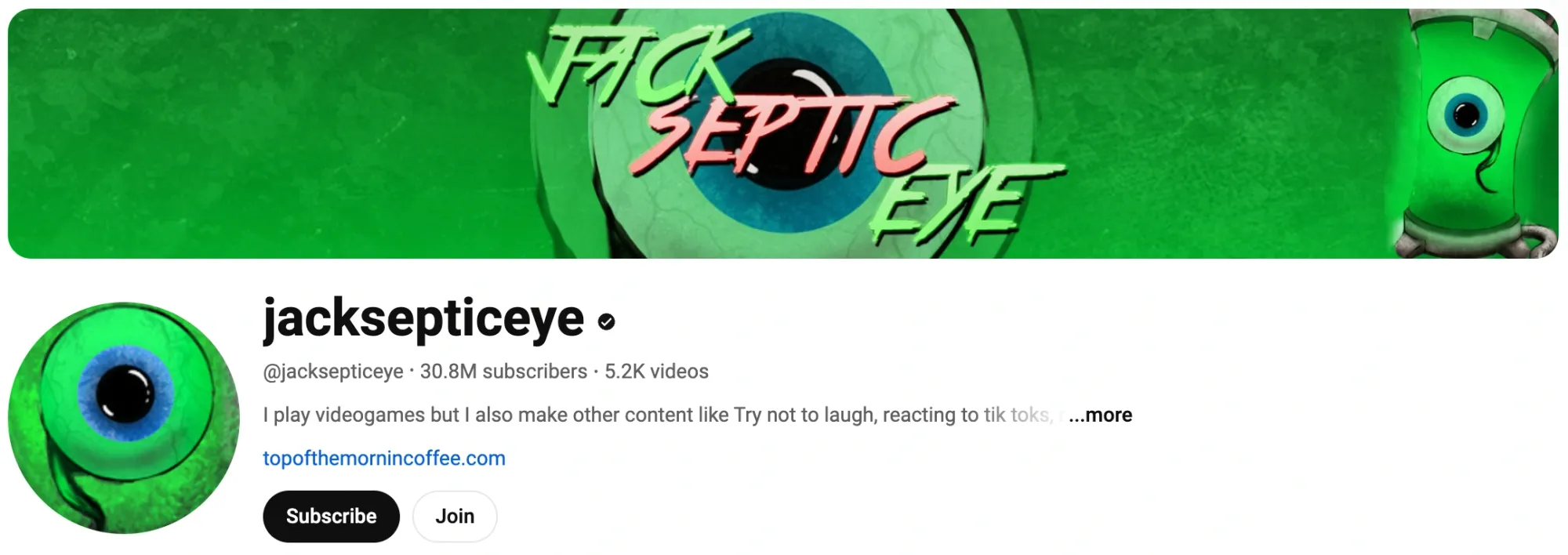
Seán McLoughlin, better known as Jacksepticeye, also struggled with burnout after maintaining a grueling daily upload schedule for years. The pressure to meet fans’ expectations led to mental health struggles, and he realized he needed to take a step back. Jack now advocates for mental health awareness, encouraging fellow creators to prioritize their well-being and take necessary breaks when needed.
Become a content creator with Podcastle
Content creation already requires a great deal of creativity and effort, so the technical side of things shouldn’t add extra stress. If editing and production tools seem too complex or time-consuming, Podcastle offers an intuitive, beginner-friendly platform that streamlines audio and video production.
With AI-powered features like automatic transcription and easy video editing, Podcastle simplifies the technical work so you can focus on your creativity. It’s a straightforward way to produce polished content without a steep learning curve, helping you bring your ideas to life effortlessly.
